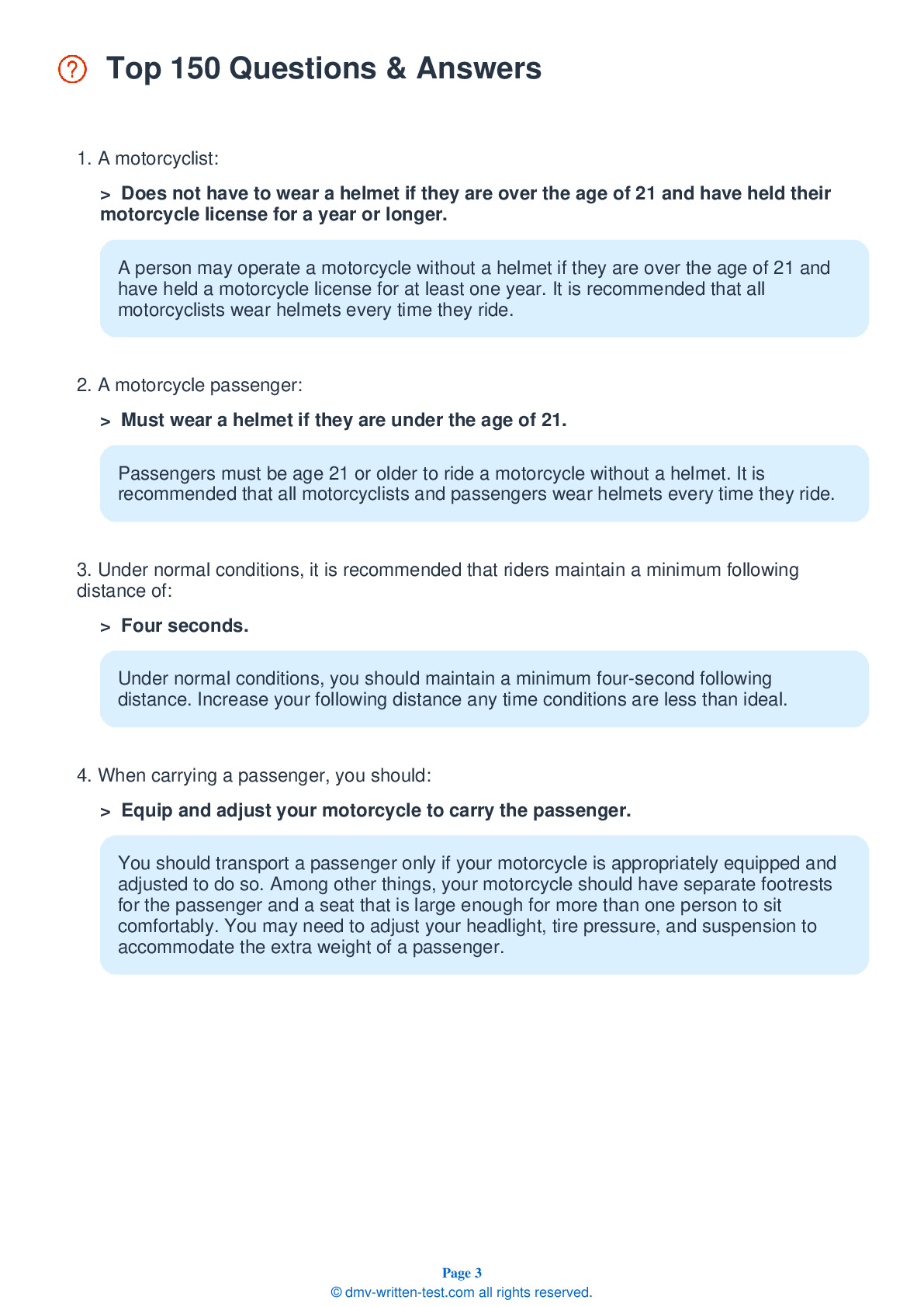2025 Kentucky Motorcycle Permit Test 10
The following questions are from real DMV written motorcycle permit tests. These are some of the actual permit questions you will face in Kentucky when getting your motorcycle learners permit. Each motorcycle theory practice test question has three answer choices. Select one answer for each question and select "grade this section." You can find this button at the bottom of the drivers license quiz. For a complete list of questions and answers for Kentucky please visit https://cheat-sheets.dmv-written-test.com/en/kentucky/motorcycle.
Number of Tests
Number of Question
Passing Score
15. When preparing to pass another vehicle, you should ride in the left portion of your lane because:
Explanation
When preparing to pass on the left, you should ride in the left portion of your lane, both to increase your line of sight and to make yourself more visible to drivers already in the passing lane.
16. Without a helmet, a motorcycle rider is ________ more likely to suffer a critical head injury in a crash.
Explanation
Without a helmet, a rider is five times more likely to sustain a critical head injury in a crash.
17. What can help reduce the risk of a head or neck injury in the event of a crash?
Explanation
Wearing a helmet is the single most effective thing you can do to reduce the risk of head or neck injuries in the event of a crash.
18. Where is the front brake lever usually located?
Explanation
The front brake lever is generally located on the right handgrip. Make sure that you are aware of the locations of all your motorcycle's controls before beginning to ride.
19. When riding at night, you should:
Explanation
Always be flexible about your lane position, especially when riding at night. Be especially careful to employ safe riding strategies when riding under conditions that are less than ideal.
20. Anti-Lock Braking Systems (ABS) are designed to:
Explanation
Some motorcycles are equipped with an Anti-Lock Braking System (ABS). ABS is designed to prevent skidding and wheel lock-up when motorcyclists are stopping in straight-line, panic situations. ABS operates when maximum pressure is applied to both the front and rear brake controls. If electronic sensors detect the possibility of a wheel lock, brake hydraulic pressure is released then re-applied to maintain maximum braking effectiveness.
21. When riding in curves, turning, or entering a highway, the best group formation is:
Explanation




